Cooktown (wikipedia) is a small town and locality in the Shire of Cook, Queensland, Australia. At the time of the 2011 census, Cooktown had a population of 2,339. Cooktown is at the mouth of the Endeavour River, on Cape York Peninsula in Far North Queensland where James Cook beached his ship, the Endeavour, for repairs in 1770. Both the town and Mount Cook (431 metres or 1,415 feet) which rises up behind the town were named after James Cook. It is the northernmost town on the east coast of Australia and was founded on 25 October 1873 as a supply port for the goldfields along the Palmer River. It was called ‘Cook’s Town’ until 1 June 1874.
Aboriginal history
In the local Guugu Yimithirr language the name for the region is, Gan.gaar Aboriginal pronunciation: [ɡ̊anˈɡaːr], which means “(Place of the) Rock Crystals.” Quartz crystals were used in various Aboriginal ceremonies across the continent and are found in the vicinity; they were traded from the Cooktown region at least as far as Mossman, about 300 kilometres (190 mi) south of Cooktown, and possibly much further.
Cook’s arrival
The site of modern Cooktown was the meeting place of two vastly different cultures when, in June 1770, the local Aboriginal Guugu Yimithirr tribe cautiously watched the crippled sailing ship – His Majesty’s Bark Endeavour – limp up the coast seeking a safe harbour after sustaining serious damage to its wooden hull on the Endeavour Reef, south of Cooktown. The Guugu Yimithirr people saw the Endeavour beach in the calm waters near the mouth of their river, which they called “Wahalumbaal”.
The captain of the Endeavour, Lieutenant James Cook, wrote: “. . . it was happy for us that a place of refuge was at hand; for we soon found that the ship would not work, and it is remarkable that in the whole course of our voyage we had seen no place that our present circumstances could have afforded us the same relief”.
Endeavour replica sailing into Cooktown’s harbour near the mouth of the Endeavour River where the original Endeavour was beached for 7 weeks in 1770.
The British crew spent seven weeks on the site of present-day Cooktown, repairing their ship, replenishing food and water supplies, and caring for their sick. The extraordinary scientist, Joseph Banks, and Swedish naturalist Daniel Solander, who accompanied Cook on the expedition, collected, preserved and documented over 200 new species of plants. The young artist Sydney Parkinson illustrating the specimens and he was the first British artist to portray Aboriginal people from direct observation.
After some weeks, Joseph Banks met and spoke with the local people, recording about 50 Guugu Yimithirr words, including the name of the intriguing animal the natives called gangurru (which he transcribed as “Kangaru”). Cook recorded the local name as “Kangooroo, or Kanguru”.
The first recorded sighting of kangaroos by Europeans was on Grassy Hill, which rises above the place where the ship was beached. Cook climbed this hill to work out a safe passage for the Endeavour to sail through the surrounding reefs, after it was repaired.
Cook named the river the “Endeavour” after his ship, and, as they sailed north, he hoisted the flag known as the ‘Queen Anne Jack’ and claimed possession of the whole eastern coast of Australia for Britain. He named Cape York Peninsula after the then Duke of York (“The Grand Old Duke of York“).
“In 1886 the people of Cooktown were anxious to recover the brass guns of the Endeavour which were thrown overboard, in order to place them as a memento in their town; but they could not be found, which is not altogether surprising.”[9]
King’s expedition]
The next recorded European expedition to the area was nearly 50 years later, when another botanist, Allan Cunningham, accompanying Captain Phillip Parker King, visited the remarkable region in 1819-20. He also collected numerous botanical specimens for the British Museum and Kew Gardens.
Gold Rush
In 1872, William Hann discovered gold in the Palmer River, southwest of Cooktown. His findings were reported to James Venture Mulligan who led an expedition to the Palmer River in 1873. Mulligan’s expedition found quantities of alluvial gold and thus began the gold rush that was to bring prospectors to the Endeavour River from all over the world.
The Queensland government responded quickly to Mulligan’s reports, and soon a party was dispatched to advise whether the Endeavour River would be a suitable site for a port. Shortly after, a new township was established at the site of the present town, on the southern bank of the river and Cooktown Post Office opened on 1 January 1874. The Palmer goldfields and its centre, Maytown, were growing quickly. The recorded output of gold from 1873 to 1890 was over half a million ounces (more than 15,500 kg). Cooktown was the port through which this gold was exported and supplies for the goldfields brought in. Word of the gold quickly spread, and Cooktown was soon thriving, as prospectors arrived from around the world.
Population estimates vary widely, but there were probably around 7,000 people in the area and about 4,000 permanent residents in the town by 1880. At that time, Cooktown boasted a large number of hotels and guest houses. There were 47 licensed pubs within the town boundaries in 1874 although this number had dropped to 27 by the beginning of 1880. There were also a number of illegal grog shops and several brothels. There were bakeries, a brewery and a soft drinks factory, dressmakers and milliners, a brickworks, a cabinetmaker, and two newspapers.
The port of Cooktown served the nearby goldfields and, during the goldrush of the 1870s, a Chinese community many thousands strong grew up in the goldfields and in the town itself. The Chinese played an important role in the early days of Cooktown. They came originally as prospectors, but many established market gardens, supplying the town and the goldfields with fruit, vegetables and rice, while others opened shops.
However, largely through cultural misunderstandings, conflict broke out between the Aboriginal people and the new settlers, and the diggers. The Cooktown Herald, 8 December 1875, reported: “The natives wholly ignorant of the terrible firepower of fire-arms, and confiding in their numbers, showed a ferocity and daring wholly unexpected and unsurpassed. Grasping the very muzzles of the rifles they attempted to wrest them from the hands of the whites, standing to be shot down, rather than yield an inch….” It was an unequal struggle. Whole tribes were wiped out as European settlement spread over Cape York Peninsula.
In 1887, a Chinese Investigation Commission to South-East Asia arrived in Cooktown from Canton to investigate the social conditions of Chinese living in the colonies and to establish consulates in them. The visit went well, General Wong Yung Ho was pleased with what they had found, and cheers were exchanged between the Commission members and local residents as they left on 7 August 1887. Transport was an ongoing problem for the new settlers. Getting supplies and people to the goldfields often took three weeks. After every wet season the tracks and bridges had to be remade. A railway line from Cooktown to Maytown, was planned, but it took five years to get the 67 miles (108 km) to Laura – and that is where it stopped. By that time the gold was petering out, so the Queensland Government refused further funding for the venture.
In spite of this, the train proved to be a lifeline for the Peninsula people connecting the hinterland to Cooktown, from where one could catch a boat to Cairns and other southern ports. The line was closed in 1961 after the Peninsula Development Road was built connecting Cooktown and other Peninsula communities with Cairns and the Atherton Tableland to the south.
Cooktown’s magnificent Botanic Garden of 62 hectares (154 acres) was established near the town in 1878. Much work was done in the early stages – with wells sunk, water reticulated, garden beds enclosed, stone-lined paths, stone-pitched pools and footbridges made, and lawns, trees and shrubs planted.
Although the gardens fell into disrepair, in recent years they have been expanded and are a popular destination for botanists and nature lovers. Most of the early stonework has been restored, and beautiful walking tracks lead the visitor through the Botanic Garden to the magnificent beaches at Finch Bay and Cherry Tree Bay.
In 1881, a bridge over the Endeavour River was completed, which opened up the richer pastoral lands of the Endeavour and McIvor River valleys. Tin was found in the Annan River area, south of Cooktown, in 1884.
In 1886, Lutheran missionaries came to Cooktown to establish a secure place for the Aboriginal people who were living in abominable conditions on the edge of the town. Missions were established at Elim on the beach (later they moved inland to Hopevale), and Wujal Wujal, near the mouth of the Bloomfield River. Also in 1888, five Irish nuns from the Sisters of Mercy Order arrived in Cooktown and established a Catholic convent school. The original building is now used as the James Cook Museum. In 1893 the town was described as follows:
“Cooktown, which now stands on the Endeavour River, is a thriving place, and the northernmost town on this coast. It has some 2000 inhabitants, and is the port for a gold mining district. A deeper channel has now been dredged over the bar that gave Cook so much trouble, but it is not a harbour that will admit large vessels.”
With the gold rush over, the number of people living in the area started dwindling. Two major fires struck Cooktown – in 1875 and, again, in 1919 when whole blocks of buildings in the main street were burned to the ground. A major cyclone in 1907 added to the destruction.
World War II
By 1940, little evidence of Cooktown or Maytown’s interesting past remained. During the Second World War, Cooktown became an important base for the war effort. The civilian population of Cooktown was encouraged to evacuate in face of the Japanese advances and by 1942 the vast majority had left. The Aboriginal people of the Lutheran missions at Hope Vale and Bloomfield were forcibly removed – most being taken south to Woorabinda in May, 1942, while some of the elderly people were sent to Palm Island. The senior missionary, Pastor Schwartz (known as Muni to the local people), was arrested and placed in internment as he were suspected as being an enemy sympathiser. The Aboriginal people were not allowed to return to their homelands until 1949, well after the end of the war. Many Aboriginal people died when moved from their traditional lands, and many Aboriginal and white families never returned from their exile. Some 20,000 Australian and American troops were stationed in and around the town. The busy airfield played a key role in the crucial Battle of the Coral Sea when Japanese expansion towards the Australian mainland was finally halted. The last military unit, the 27th Operational Base Squadron of the RAAF, ceased operations in Cooktown in April 1946.
Since World War II
In 1949, another cyclone devastated the town, and Cooktown’s population declined further. With the closure of the rail link to Laura in 1961 and the “Peninsula Development Road” opened up to the south, the population declined to just a few hundred people before it gradually began to climb again.
There is an active Aboriginal Community Centre on the main street called Gungarde (from the original Guugu Yimithirr name for the region).
The “Milbi Wall” (or “Story Wall”) marks the place of the first encounter between the British seafarers and the local Aborigines. The Milbi (‘Story’) Wall tells the story of Cooktown and the Endeavour River from the perspective of the Aboriginal people in tiles, and is an outstanding monument to reconciliation.
Cooktown has recently grown in importance again and become a popular tourist destination. The paving of the Mulligan Highway now provides all-weather access by road for the first time. There are two flights a day connecting Cooktown with Cairns. The town now has good communications, more services, better roads, and offers residents a relaxed and healthy lifestyle.
Fewer than 2,000 people live in the town itself while about another 4,000 in the region use it as a service centre. Visitors enjoy the delightful tropical environment, the historical connections, and use it as an access point to the Great Barrier Reef, the Lakefield National Park, and for fishing.
Cooktown has a public library, bowling green, swimming pool, golf and turf clubs, historic cemetery, Chinese shrine, James Cook Museum, Botanic Gardens with walks through to the beaches, the heritage-listed Grassy Hill lighthouse, and a new $3 million Events Centre next to the Cooktown State School, built to double as an emergency cyclone shelter for Cooktown. The Information Centre and an Environment Display are in Nature’s Powerhosue in the Cooktown Botanic Garden. Charlotte Street is the main heritage precinct.[17]
Cooktown is of particular interest to botanists since the time of James Cook‘s visit when extensive collections and illustrations were made of local plants. It is situated at the junction of several vegetation zones including tropical rainforest, sclerophyll forests, sandy dunes and lagoons. Vera Scarth-Johnson, a local resident, gave a priceless collection of her botanical illustrations to the people of Cooktown, which are now housed in a dedicated gallery at Nature’s PowerHouse situated in the Botanic Gardens, and features displays of local flora and fauna.
Cooktown is a service centre for the district including the Aboriginal communities of Hopevale, 47 kilometres (29 mi) to the northwest, and Wujal Wujal, 72 kilometres (45 mi) to the south.
Cooktown is the northern terminus of the Bicentennial Heritage Trail, which, at 5,330 km (3,310 mi), is the longest trail of its type in the world. The southern end of the trail is at Healesville, Victoria, a town 52 kilometres (32 mi) north-east of Melbourne.
The rugged Mount Cook (231 metres or 758 ft), named on 27 June 1818 by Phillip Parker King, forms a backdrop to the town and is now part of the Mount Cook National Park.
27th July, Sunday
We left Mossman early this morning a bit sad about leaving Mike and Barbs for a 220km journey through some of the most breathtaking country to Lions Den Caravan Park (which is about 25kms from Cooktown). We stopped off at Palmer river roadhouse for a bit of a leg stretch and an ice cream. It’s a typical type Queensland stopover (they are different to everywhere else that we have stopped, just the atmosphere and the people). They seem to attract all sorts of people. There were a whole load of bikies filling up, lots of caravans, lots of camper trailers, lots of off road vehicles, you name it, they were there (It was awesome). We have decided to stay at the Lions den because we are not really fussed staying in Caravan Parks in towns (too structured and full of rules) and “OH, my God!! What a wonderful place we have chosen. The caravan park is nestled in between the mountains. There is a stream, flowing over boulders and a little swimming hole. I really can’t explain how beautiful this place is and how peaceful after coming from Mossman. There are a lot of people coming in with camper trailers, tents, off road bikes etc. as they have been right to the top to Cape York, which is the most Northern part of Mainland Australia and this is a good place to stop over and the way back to wherever they are going. We can’t go there because of the caravan and the road is too rough for the van. Cooktown is the furtherest North that we can go with the caravan, and so, here we are, as far away from home as we can get. The Lions Den caravan park is very different to what most of you would expect. We have been here before with Mike and Barbs but just for lunch. We have decided to stay for 3 days. They have eco tents on stilts and they look like a fun place to stay if you don’t travel with your own accommodation. There was a little 2 bit circus here last night and the little tent and animals are still here when we pulled in. There are some goats tethered and an alpaca and a pony. There is a cage at the back with 2 Rhesus monkeys but apparently they are just for show. I felt sorry for them because they just live in this travelling caravan behind bars and they don’t look very happy and I don’t think that they ever been let out. There is a pub here and it is amazing, so full of stuff and so full of character. They make the most awesome pizzas as well, who would of thought because this place seems in the middle of nowhere, no phone reception etc. but we love it.
- Welcome to Cooktown
- Our table no.
- Inside the pub
- Inside the pub
- Inside the pub
- Inside the pub
- Lions den
- Eco tents
- Lions den – the pub
- The view going up Mount Molloy
- I don’t need to tell you what this is
- Mt. Molloy
- The view going up Mount Molloy
- Smiles just for me
- Another circus friend
- The 2 bit circus – took 2 of them 3 days to move this little bit of stuff
- Heaven
- The serenity
28th July, Monday
It was very windy last night with some rain, but being tropical it is not cold. We are having to do the mozzie coils earlier here and the mozzie spray. I have been bitten to bits and one of the bites has got infected, but never mind, we just have to be careful. The mozzies here are as big as budgies and there bites are as vicious as the crocs. Hugo is having to have his tick stuff every 2 weeks instead of once a month because this is paralysis tick season and if dogs get bitten they will die. We have found about 6 ticks on him already so we have to keep checking him. We took a drive into Cooktown and what a beautiful little town it is, full of history and so beautifully laid out. There are memorials for Captain Cook and we saw the place where the ship first landed. We are loving all this history. We had a walk around, had a milkshake and just finding our feet of what to do and see. We took a drive to the top of the hill (Grassy hill) where there is a light house. The view of Cooktown from there is magnificent and the drive up there was so steep that we thought that old Betsy might start going backwards but she made it. After that we found the local IGA, needed some supplies and then Ralphie decided to stop at a bridge where the guys go fishing. It’s an old railway bridge that runs just alongside the new bridge but a little under it (if you know what I mean). It’s used for fishing, no-one is allowed onto the bridge and there are locked gates on either side but there are blokes all along there, fishing. Don’t fence me out (ha, ha, especially when it comes to fishing time). We decided to stop and see how they were getting onto the bridge and, bingo, we found it, so Ralphie will go and try his luck there. It’s a huge river (The Annan)…. It’s all estuary and lots of crocs. From there we went to Archer point. It is about 12kms off the beaten track and some 4×4 rough in parts. Archer point is through Aboriginal land (Yuku-Baja-Muliku) and is also a turtle sanctuary, there is a turtle rescue and rehabilitation centre there as well. The climb to Archer point is really steep and again the view is breathtaking. It really is so beautiful here and we are so happy that we are not camping in a town although Cooktown is charming. On the drive back we stopped at Black mountain (Black mountain National park), these mountains are amazing, it looks like someone has taken a whole heap of black rocks and just dumped them there. There is a story of how they began but you can see that in my photos because at the mo I am way too lazy to write the reason why they are like that. We got back to the caravan park and bumped into a couple that we met in Normanton, so we will have dinner with them in the pub tomorrow which is a few metres from our caravan, so not along way to roll home. We cooked a lamb bone tonight and there was quite a bit of meat left over on it and Hugo is not allowed to have it so I am saying, “Sorry, Kaz, but we thought of you when we put this bone in the rubbish bag” (ha, ha), You would have killed for this one xx and it was a bit of a waste.
- Memorial to Captain Cook
- Memorial to Captain Cook
- This cannon was put here to stop a Russian invasion
- The foreshore
- Captain Cook
- Captain Cook
- This is where the endeavour firs landed
- Yes, absolutely!
- The foreshore
- Lightshouse – Grassy hill
- Overlooking Cooktown from Grassy Hill
- Overlooking Cooktown from Grassy Hill
- Overlooking Cooktown from Grassy Hill
- Lookout
- Lighthouse – Grassy hill
- Grassy hill
- Archer Point
- Lookout from Archer Point
- Lighthouse – Archer Poing
- the lookout from Archer Point
- Archer Point
- Archer Point
- Archer Point
- Archer Point
- Archer Point
- Archer Point
- Archer Point
- Archer Point
- Black Mountain
- Black Mountain
- Black Mountain
- History of Black Mountain
- History of Black Mountain
29th July, Tuesday
It rained heavily during the night but I guess that we are bordering rain forest and really should expect this. It was nice so we are not complaining as everything smelled so fresh and clean this morning. We decided to go to Wujal Wujal as there are some beautiful falls there. Mike and Barbs brought us here 3 years ago when we were here. We left the caravan park and set off for Wujal Wujal. The town of Wujal Wujal is an Aboriginal community and is on the Bloomfield track. The track used to be all 4×4 but is now part sealed and part sand road (which has been compacted and ready to be sealed). We went and saw the Wujal Wujal falls and from there onto the part of the Bloomfield track that is 4×4 only. There is a bridge being built over the Bloomfield river (which is due to be opened any day). The old bridge we had to take is low lying and at water level so wouldn’t be able to be used in the wet. The road from here starts getting a bit rough with ruts and water crossings etc. It’s not too extreme 4×4 though, we have been on a lot worse but we are not fussed about doing the extreme stuff anymore, too much like hard work and we like to enjoy the scenery. The 4×4 part of the road (which really is probably the last bit of the Bloomfield track that is still a track but there are works in progress to seal this as well). I guess it’s sad for the real 4×4 enthusiasts which we used to be. This part of the track runs from Wujal Wujal to Cape Tribulation and through the Daintree National park which is rain forest. If I had to try and describe the smells and the sounds of the forest I would be lost. It is all so breathtaking, it smells like earth and it’s so fresh and clean and the sounds are of birds and things that live there, the plants are dense and the creeks are full and flowing, it’s mind blowing. You all need to come here and have this experience for yourselves because it’s hard to describe. We stopped at a boat ramp along the Bloomfield river and there were a couple of guys fishing, the one caught a decent size bream. Across the bank there was there was a huge croc just lying there. We figured between the 4 of us that he must be at least 5 to 6 metres long and more likely 6 metres. We had the binocs with us and got a close up of him……… he was a big boy and you wouldn’t want to call him over. From there we stopped off at a little creek that is quite secluded and hard to spot from the road (Whitehead creek). Oh, my goodness! How beautiful again. The photos don’t do this place justice because you need to have the whole experience, the sights, the sounds, the smells, the feeling. Back to base for a little rest and then we went to pub and had dinner with those people we told you about. The food was awesome, you don’t get ripped off here. Night all. Xxxxxx
- Bloomfield river
- Bloomfield river
- You have been warned – Going into Wujal Wujal which is Aborignal land
- Wujal Wujal falls
- crossing the old bridge – the new high bridge is not yet open
- Rain forest
- Only in Queensland
- Creek crossing
- Creek crossing
- Small creek crossing
- Daintree (rain forest)
- Creek crossing
- Our big fella
- Daintree (rainforest)
- Daintree (rainforest)
- Daintree (rainforest)
- Daintree (rainforest)
- Daintree (rainforest)
30th July, Wednesday
Ralphie went fishing to that fishing spot under the bridge and I did some housework as we are off tomorrow. He came back with zilch, caught a few small ones which always go back, but we had a good time. People are camping there and they are nuts. There was a croc close by on the boat ramp at night time and it’s not far from where they were camping. Lucky that they were there to tell Ralph the story. We went and did some shopping for supplies and then went to the cemetery………Yes, there I go again. Ralph enjoyed this one as it is steeped in history and was so interesting. We drove back to base and will slowly start packing up to leave at sparrows in the morning. I forgot to tell you, because there is no reception here we put up the satellite dish and are watching Perth TV. I even got to see the final of Master Chef and yes, I can hear you all saying “but, Linda doesn’t watch that stuff”. I got sucked in on our travels but now it’s over and life can be normal again. Chat to you again in the next location, which will be Mission Beach. Xxxxxxx
- Cooktown Hotel
- Janet Mary
- Janet Mary
- Beatrice Emily
- Beatrice Emily
- Mary Watson
- Mary Watson
- Mary Watson
- Obviously a poor family, sad
- Albert MaClaren
- Albert MaClaren
- Albert Ross Hovell
- The Normandy Woman
- The Normandy Woman
- Elizabeth Cooper
- The Chinese Shrine
- The Chinese Shrine
- The Chinese Shrine
- The Chinese Shrine
- Rebels corner – young men buried here about 20 years ago. I can’t find any research as to why it’s called this
- Rebels corner – young men buried here about 20 years ago. I can’t find any research as to why it’s called this
- Rebels corner – young men buried here about 20 years ago. I can’t find any research as to why it’s called this





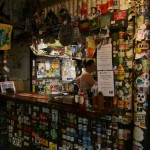





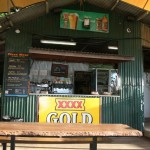



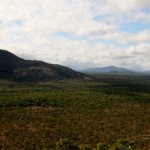



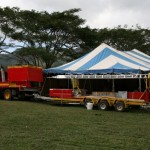
































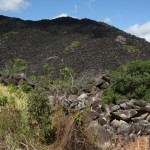








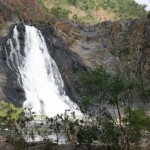





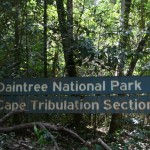

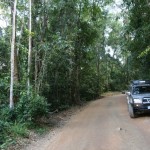

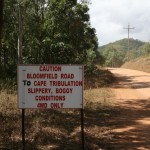


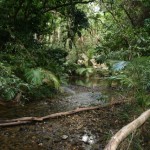



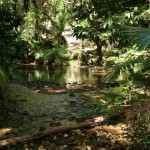



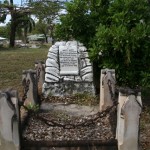














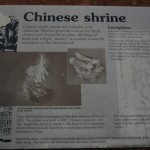




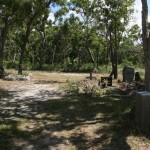
Noooo ……. not the lamb bone in the bin!!!!!!!….that’s sacralige (or however you spell it!!) gorgeous pics as usual – keep havin fun. Xoxo